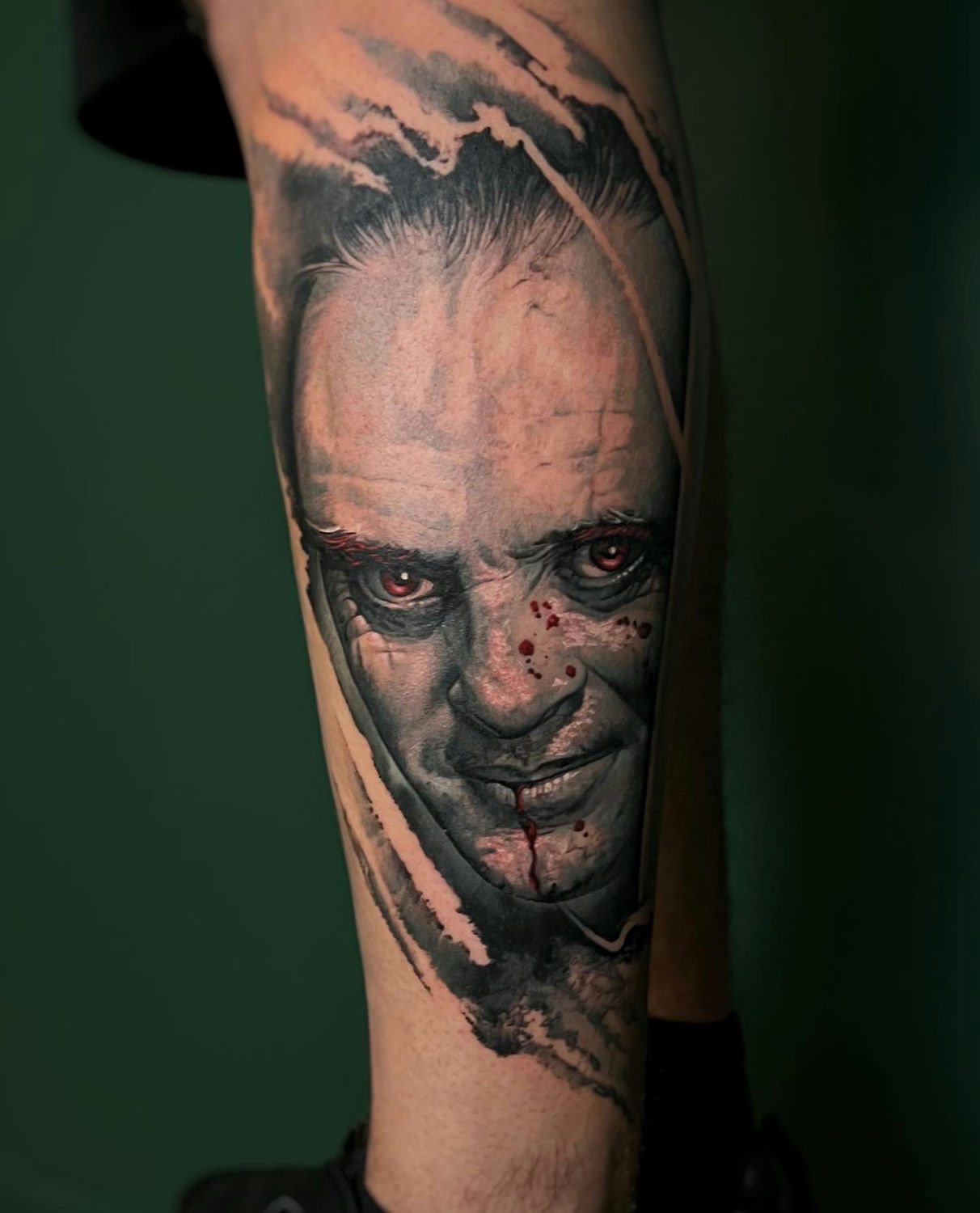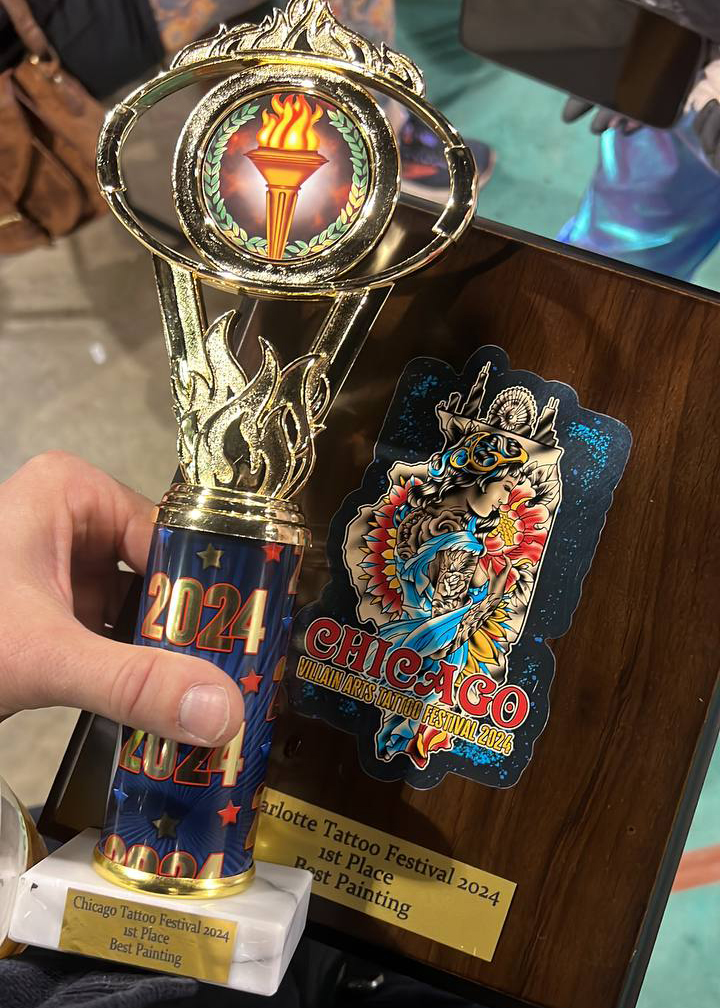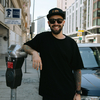Roman Zakharchenko, known in the tattoo world under the pseudonym Roman Zao, has come a long and fascinating way from being a passionate graffiti artist to one of the leading artists in black-and-grey realism. In this interview, Roman shares his views on tattoo art, discusses his creative journey, motivation, and experience working at international tattoo conventions.
Tell us a little about yourself. Why did you choose the path of a tattoo artist? Where and how did your career start?
- It turns out that I have been drawing all my life, since I was about four years old. My whole life has been continuously connected with art: drawing, painting, sculpture, and painting rooms and buildings. In school, I was consumed by an interest in graffiti, and after some time, I started earning from it and doing art professionally. I graduated from university with a degree in "graphic design," while continuing to work and develop in graffiti and design.

In 2014, I became an apprentice at one of the tattoo studios in our city. I was in this position for a short time, and less than a month later, I became a tattoo artist. I was completely absorbed by tattooing; I was fascinated by the fact that a design on a person's body is preserved and lives longer, bringing joy to its bearer for the rest of their life. I was captivated by the fact that tattooing as an art form lives longer than some paintings, let alone walls or printed publications.
Where are you working now?
- Currently, I work at SashaTattooing Gallery in Los Angeles, USA.

For you, is tattooing an art, a job, or something else?
- Tattooing is definitely art. It is a form of self-expression, both for the artist and for the owner of the tattoo. For me, tattooing (drawing) is a lifelong passion with the added function of earning a living. I believe that tattoos should be completely individual, made for one person and not copied from the internet. I am very drawn to drawing, new techniques, interesting projects, and new, crazy ideas.

Why did you choose black-and-grey realism as the foundation for your work?
- I am fascinated by black-and-white imagery, whether it's a tattoo or a photograph. I feel that black-and-white images can convey more essence and present ideas more vividly. I like to see the result "almost immediately," without the risk of pigment fading, with smooth and "smoky" transitions. Black-and-grey tones allow for the incorporation of additional shades and colors without the risk of "mud," as in grey wash.

In my practice, I have noticed that black-and-grey works tend to look better over time compared to color tattoos and even grey wash, whose light tones fade after a few years. Practice shows that not all people, in fact, almost none, take good care of their tattoos to keep the colors vibrant after 6/8/10 years. Therefore, I was drawn to this technique, its effectiveness, and how it "lives" longer.
What features of your tattoos do you emphasize?
- In my work, it’s the interaction with the geometry of the body and the individuality of the tattoo. The thought embedded in the image. I enjoy interacting with the client and creating something unique for them. I try to approach it from an artistic perspective, playing with the body's geometry for a more effective composition, creating entire structures and storylines in larger projects like sleeves, backs, and so on. I also emphasize the individual approach to each person. It is important for me to find mutual understanding with the client, direction, idea, and overall concept to create something unique.

What themes do you prefer?
- I prefer to play with the storyline and idea of the image in my work. For example, a sleeve project where from the forearm to the shoulder, one can trace the "hero's journey" or certain "experiences" captured in the design, significant for the wearer. I like mystical themes, playing with double images and meanings, using naturalistic landscapes and panoramas. I enjoy creating something greater than just a tattoo, something sacred for its bearer. Playing with composition in creating large projects, sometimes adding a color accent, and sometimes adding "Easter eggs" and interesting details.

What is the most important thing in a tattoo for you?
- The most important thing in a tattoo for me is the trust of the client and the realization of my creative potential. The ability to experiment, living art. Creating special images for a person, embodying ideas through my technique and vision.

How do you manage to maintain your creative potential day after day? How do you cope with burnout?
- Coping with burnout is difficult, especially during periods of high workload. In my work routine, switching "tools," so to speak, helps: creating paintings/canvases, sculpture, graffiti, simply drawing, design, music. In difficult times, nature, the forest, silence, and solitary creation of natural landscapes without means of communication help me the most — this is the best option. It allows me to maintain inspiration and a fresh perspective for realizing creative potential day after day and bring experiments into new projects.

Tell us about how your projects come to life. Do you use AI in your practice? What do you think about this technology in relation to tattooing?
- I do not use artificial intelligence in my work. Most of the sketches I draw from scratch, and the rest is freehand. Sometimes I use references but always add my details or redraw. I always add my own touches to my work before the session on the person's body. I believe that tattoos should be absolutely individual and one of a kind, only for the bearer. AI has its place, but not in creativity!
I can’t say that I like AI in tattooing, drawing, and art at all! I believe that AI is a direct path to the atrophy and dumbing down of the artist and their creativity: "A time will come when artists will forget how to draw without AI." I stand for the older school of good drawing.

Do you participate in conventions? Tell us about your experience and results.
- Tattoo conventions and festivals are a great source of energy for my growth and creative development. The first convention I attended was the Chkalov Tattoo Convention in Vladivostok, where I won first place in the "Healed Work" category and second place in "Original Tattoo." Then came Moscow Tattoo Week in 2017, and I was impressed by the number of artists in one place and the quality of the event's organization.
After that, I set myself the goal of participating in various events each year. In 2018, I took part in the SPB Tattoo Festival — it was a fun experience, and I traveled from Vladivostok to St. Petersburg in a minibus with the MoreTattooTour project. We even made a whole series about it, which you can watch on YouTube.

Later, there was the Get Tattoo Fest 2018 in Vladivostok, where I won first place in black-and-white realism and the People's Choice Award, and Vladivostok Tattoo Week — first place for a healed color tattoo and second place for a black-and-white tattoo.
In 2019, I participated in the Baikal Tattoo Fest in Irkutsk and the SPB Tattoo Festival 2019. In 2020, due to the pandemic, I couldn't travel, but in 2021 I attended the Golden State Tattoo Expo in Los Angeles for the first time, and it was an incredibly inspiring experience.
Then I moved and in 2023 participated in the NY Empire State Tattoo Expo and again in the Golden State Tattoo Expo in Los Angeles. Events in the US are much larger, with an average of around a thousand booths. The last convention I attended was just such a large-scale event.
In March 2024, I had the honor not only to participate but also to be a judge at the Chicago Tattoo Festival — it was my first experience as a judge, and it was unforgettable, as there were over 1500 tattoo artists! At this same festival, I was thrilled to win first place in the Best Painting category with my original paintings. This was very significant for me, as it was a major international convention. Overall, I love participating in tattoo conventions and am sticking to my plan of attending once a year!
How do you assess your popularity? Why do clients choose you?
- It’s difficult for me to assess my popularity, only based on feedback from fellow artists and followers on social media. I had a popular TikTok account in Russia before it was shut down in 2022; it all started very fun. I now run a new account and actively develop Instagram and Pinterest. Of course, some videos get millions of views, and I receive great support and feedback, which is very gratifying.

Working with clients happens on-site, starting from the consultation to the execution of the tattoo. My task is to create a design as qualitatively and artistically as possible and bring it to life considering the client’s ideas or wishes, taking into account anatomical features.
Clients choose me because I listen and understand them, creating an art piece through my vision. I would say, “Every artist will find their audience.” I often notice that many clients share my interests and vision of certain life situations, which creates an atmosphere for easy communication on long-term projects. Many clients remain friends for years. Such trust means a lot to me.
Tell us about the most challenging project in your career.
- So far, the most challenging project for me was the back piece at the Golden State Tattoo Expo in Los Angeles in 2023. It was a full back project that needed to be completed in three short days during the entire show. It was a very interesting challenge for me, as it was the first time I had done a full back piece in three days. But most of all, I was concerned about my client at the convention. It is both physically and emotionally very tough to endure a full back tattoo in a fairly noisy environment for three days. I was worried, but it all worked out, and we did it!
What motivates you to create and develop? What goals do you set for yourself?
- My immediate goals in tattooing are to work on larger projects and create designs for individuals. I want to find some kind of absolute or ideal in tattooing. On a more practical level, I want to do a tattoo for Eminem, as I think it would be a very cool experience. My broader goal is related to art in its artistic expression through paintings, material application, and sculpture.
In the near future, I plan to participate in art exhibitions in Los Angeles, California, and neighboring states, create an art performance, and hold a personal exhibition in a gallery. My main motivation is the desire to share and communicate my thoughts, interpretation of my vision, ideas, and art on various materials. Conveying emotions and experiences, and aiming to “touch” people with deep thoughts in my work.













Comments (3)